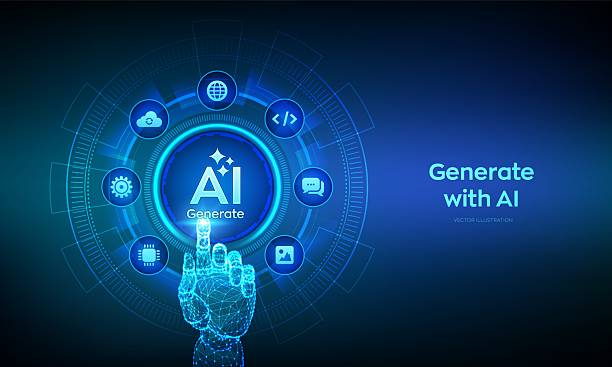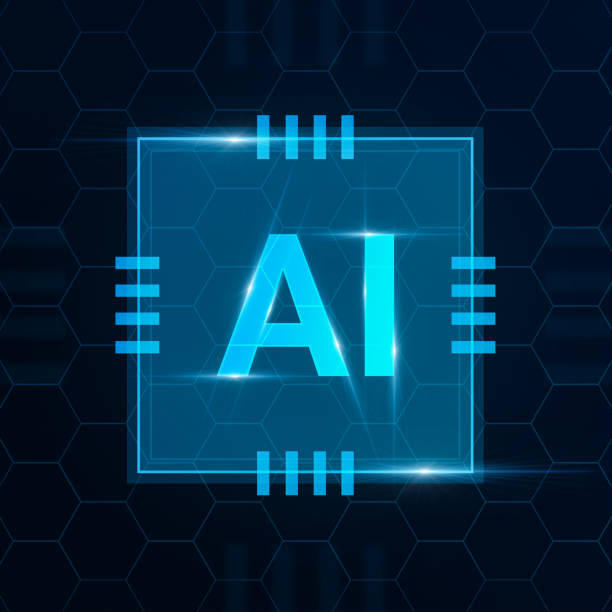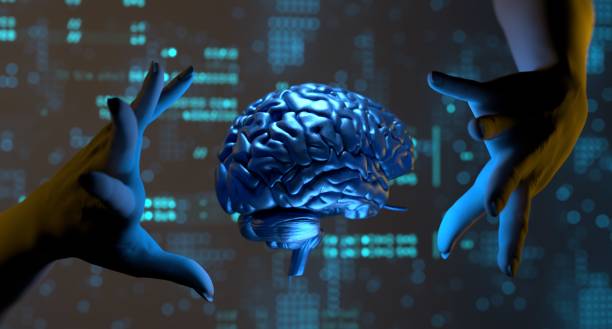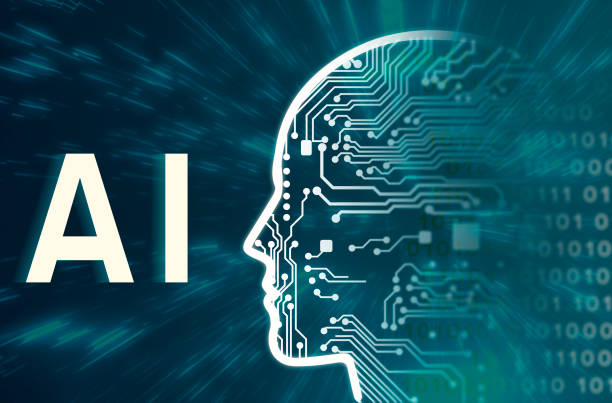What is Artificial Intelligence? Definitions and Basic Concepts

#Artificial_Intelligence (AI) is a branch of computer science that deals with building machines capable of performing tasks that typically require human intelligence.
These tasks include learning, reasoning, problem-solving, natural language understanding, and pattern recognition.
Artificial intelligence strives to create systems that can think and act like humans.
This is a broad definition and includes a wide range of techniques and approaches.
For example, the recommender systems we see in online stores are a type of artificial intelligence that suggests relevant products based on user behavior.
Or facial recognition systems used in smartphones also utilize artificial intelligence algorithms.
In summary, artificial intelligence seeks to create machines that can act intelligently.
This intelligence can exist at various levels, from simple systems that perform only a specific task, to complex systems that can perform multiple tasks simultaneously and even learn and adapt to their environment.
The ultimate goal of artificial intelligence is to create machines that can assist or even replace humans in various tasks.
This field is rapidly advancing, and we see new innovations in it every day.
From self-driving cars to surgical robots, artificial intelligence is transforming our lives.
Did you know that 85% of customers check your company’s website before any interaction?
With Rasaweb, build a corporate website that reflects your credibility.
✅ Increase credibility and customer trust
✅ Attract quality leads
⚡ Get free website design consultation
History and Evolution of Artificial Intelligence

The history of artificial intelligence dates back to the 1950s when researchers began exploring the idea of whether machines could be built to think.
One of the first AI programs was a chess-playing program, which showed that machines could compete with humans in complex mental activities.
In the following decades, artificial intelligence faced many ups and downs.
In some periods, significant progress was made, but in others, expectations were not met, and research budgets were cut.
However, in recent years, with advancements in hardware and algorithms, artificial intelligence has once again become a popular field.
One of the main factors in the recent progress is deep learning, a machine learning method that uses artificial neural networks with many layers.
This method has achieved very good results in various fields such as image recognition, natural language processing, and computer games.
Today, artificial intelligence is used in various industries including medicine, education, transportation, and manufacturing, and it is predicted to play a more important role in our lives in the future.
The evolution of #Artificial_Intelligence is an ongoing journey that began with early ideas about thinking machines and continues to today’s complex systems capable of learning, reasoning, and problem-solving.
This evolution has been influenced by various factors, including advancements in hardware, algorithms, and data, and is expected to continue in the future.
Types of Artificial Intelligence: From Narrow AI to General AI

Artificial intelligence can be divided into different types based on their capabilities and applications.
One of the most common classifications is dividing AI into two categories: narrow AI and general AI.
Narrow AI refers to systems designed to perform a specific task and perform very well in that task.
For example, facial recognition systems, recommender systems, and chess-playing systems are all examples of narrow AI.
These systems cannot perform other tasks and only perform well in the area for which they were designed.
In contrast, general AI refers to systems that can do anything a human can do.
These systems must be capable of learning, reasoning, problem-solving, and natural language understanding.
General AI is still in the early stages of development, and systems with this level of intelligence have not yet been built.
In addition to these two categories, there is also a third category called super AI.
This category refers to systems that surpass human intelligence and can perform tasks that humans are unable to do.
Super AI is still a hypothetical concept, and no real system with this level of intelligence exists.
In summary, types of artificial intelligence can be divided into three categories: narrow AI, general AI, and super AI.
Narrow AI is currently used in many industries, while general AI and super AI are still in the early stages of development.
| Type of AI | Characteristics | Examples |
|---|---|---|
| Narrow AI | Focus on a specific task, high performance in that task | Facial recognition, recommender systems |
| General AI | Ability to perform any task a human can | Still in early stages of development |
Applications of Artificial Intelligence in Various Industries

Artificial intelligence is currently used in various industries, significantly increasing productivity and efficiency.
In medicine, AI is used for disease diagnosis, drug development, and personalized treatments.
For example, AI systems can analyze medical images such as MRI and CT scans with high accuracy and detect disease symptoms.
In the manufacturing industry, AI is used to optimize production processes, quality control, and predict equipment failures.
For example, smart robots can work on production lines and perform repetitive and dangerous tasks.
In the transportation industry, AI is used for developing self-driving cars, optimizing routes, and managing traffic.
Self-driving cars can perceive their surroundings using sensors and AI algorithms and move without a driver.
In the financial industry, AI is used for fraud detection, risk management, and providing advisory services to customers.
For example, AI systems can review financial transactions and identify suspicious transactions.
These are just a few examples of AI applications in various industries, and as this technology advances, new applications will emerge in the future.
#Artificial_Intelligence is transforming the way we work and live and is expected to play a more important role in human societies in the future.
Are you losing potential customers due to an unprofessional website? Rasaweb is your answer! With our specialized corporate website design services:
✅ Enhance your brand’s credibility and standing
✅ Experience more targeted customer acquisition
⚡ Contact us now for a free consultation!
Machine Learning and Deep Learning: Key AI Techniques

Machine learning and deep learning are two key techniques in the field of artificial intelligence that allow machines to learn from data without explicit programming.
Machine learning refers to a set of algorithms and methods that enable computers to identify patterns and relationships using data and perform predictions or automated decision-making.
In machine learning, data is fed as input to the algorithm, and the algorithm builds a model by analyzing the data, which can then be used for prediction or decision-making on new data.
Deep learning is a subset of machine learning that uses artificial neural networks with many layers to analyze data.
These networks are capable of identifying more complex patterns in data and achieving better results in various fields such as image recognition, natural language processing, and machine translation.
The main difference between machine learning and deep learning is in the complexity of models and the amount of data required.
Deep learning requires much more data to be effectively trained, but at the same time, it can identify more complex patterns.
Both machine learning and deep learning techniques play an important role in the advancement of artificial intelligence and are used in many practical applications.
Challenges and Limitations of Artificial Intelligence

Despite significant advancements, artificial intelligence still faces many challenges and limitations.
One of the most important challenges is the need for large amounts of high-quality data to train AI models.
Machine learning and deep learning models require a large volume of data to function effectively.
Also, the quality of data is very important.
If the data is incomplete, inaccurate, or contains errors, AI models cannot be properly trained and provide accurate results.
Another challenge is the interpretability issue.
Many AI models, especially deep learning models, are black boxes, meaning we don’t know how these models make decisions.
This issue can be problematic in some applications, especially those requiring transparency and explainability.
For example, if an AI system decides in a legal case that an individual is guilty, we must be able to explain why it made that decision.
Another challenge is the issue of bias.
AI models can learn existing biases in training data and apply these biases in their decision-making.
This can lead to discrimination and inequality.
For example, if a facial recognition system is trained with data that mostly includes images of white people, it may perform poorly in recognizing faces of people of color.
The Future of Artificial Intelligence and Its Impact on Human Societies

The future of artificial intelligence is very bright and full of potential.
With advancements in hardware, algorithms, and data, AI can achieve significant breakthroughs in many areas.
In the future, AI is expected to play a more important role in fields such as medicine, education, transportation, manufacturing, and customer services.
One of the most important impacts of artificial intelligence on human societies is automation.
AI can automate many tasks currently performed by humans.
This can lead to increased productivity and reduced costs, but at the same time, it can also lead to job losses.
To benefit from automation and prevent its negative consequences, we must have careful planning and pay attention to workforce training and retraining.
| Field | Impacts of Artificial Intelligence |
|---|---|
| Medicine | More accurate disease diagnosis, development of new drugs, personalized treatments |
| Education | Personalized education, intelligent learning systems, virtual teaching assistants |
Artificial Intelligence (AI), as a transformative technology, has immense potential to improve human lives and solve complex problems.
However, we must also pay attention to the challenges and risks associated with this technology and strive to use it responsibly and ethically.
Ethics in Artificial Intelligence: Accountability and Transparency

Ethics in artificial intelligence is a very important and complex issue that deserves special attention.
As the use of #Artificial_Intelligence expands in human societies, the ethical issues related to this technology also increase.
One of the most important ethical issues is accountability.
If an AI system makes a mistake, who is responsible? Are the system developers, the manufacturing company, or the system user responsible?
Another issue is transparency.
We must be able to understand how AI systems make decisions.
If an AI system decides in a legal case that an individual is guilty, we must be able to explain why it made that decision.
Another issue is bias.
AI models can learn existing biases in training data and apply these biases in their decision-making.
This can lead to discrimination and inequality.
To use artificial intelligence responsibly and ethically, we must address these ethical issues and strive to find solutions for them.
We must enact laws and regulations that govern the use of artificial intelligence and prevent the misuse of this technology.
Also, we must pay attention to education and awareness-raising about the ethical issues of artificial intelligence so that individuals can use this technology consciously.
Are you worried that your company’s old website will drive away new customers? Rasaweb solves this problem with modern and efficient corporate website design.
✅ Boosts your brand’s credibility.
✅ Helps attract targeted customers.
⚡ Contact Rasaweb for a free consultation now!
Skills Required to Enter the Field of Artificial Intelligence

Entering the field of artificial intelligence requires various skills.
One of the most important skills is having sufficient knowledge in mathematics and statistics.
Many AI algorithms are built upon mathematical and statistical concepts.
To understand and use these algorithms, you must have a good knowledge of mathematics and statistics.
Another skill is having sufficient knowledge in computer science and programming.
Artificial intelligence is a branch of computer science, and to work in this field, you must have a good knowledge of programming.
Programming languages such as Python, R, and Java are among those widely used in the field of artificial intelligence.
Another skill is problem-solving ability.
Artificial intelligence seeks to solve complex problems, and to work in this field, you must have problem-solving ability.
This includes the ability to identify a problem, analyze it, find various solutions, and evaluate them.
In addition to these skills, soft skills such as teamwork, communication, and creativity are also very important for success in the field of artificial intelligence.
AI Learning Resources for Farsi Speakers
![]()
Fortunately, many resources are available for learning artificial intelligence for Farsi speakers.
One of the best resources is online courses.
Educational websites such as Coursera, edX, and Udacity offer various courses in the field of artificial intelligence that you can use.
Many of these courses have Farsi subtitles or are taught by Iranian professors.
In addition to online courses, many books and articles are also available on artificial intelligence.
You can find and use books and articles related to artificial intelligence from various libraries and websites.
Also, you can participate in AI conferences and workshops to get acquainted with the latest advancements in this field and network with experts.
#Artificial_Intelligence is a dynamic and evolving field, and to succeed in it, you must continuously update your knowledge.
To start, you can use free resources such as blog articles, video tutorials, and practical projects.
Then, you can move on to online courses and books to deepen your knowledge.
Also, you can participate in open-source AI projects to gain practical experience.
Remember that learning artificial intelligence is a continuous process and requires patience and perseverance.
Frequently Asked Questions
| Question | Answer |
|---|---|
| What is Artificial Intelligence? | It is the simulation of human intelligence in machines programmed to think like humans and imitate their actions. |
| What are the main branches of Artificial Intelligence? | They include Machine Learning, Deep Learning, Natural Language Processing, Computer Vision, and Robotics. |
| What is Machine Learning? | It is a branch of Artificial Intelligence that focuses on enabling systems to learn from data and identify patterns without explicit programming. |
| Mention examples of Artificial Intelligence applications in our daily lives. | Voice assistants (like Siri and Alexa), recommendation systems in Netflix and Amazon, self-driving cars, and facial recognition software. |
| What is Deep Learning? | It is a subset of Machine Learning that uses artificial neural networks with multiple (deep) layers to process large amounts of data. |
| What is Natural Language Processing (NLP)? | It is a branch of Artificial Intelligence that focuses on enabling computers to understand, interpret, and generate human language. |
| What are some ethical concerns related to Artificial Intelligence? | They include data bias, privacy, job displacement, and accountability in case of errors. |
| What are the main benefits of Artificial Intelligence? | Increased efficiency, improved decision-making, automation of repetitive tasks, and discovery of complex patterns in data. |
| How is Artificial Intelligence used in healthcare? | In disease diagnosis, drug discovery, medical image analysis, and personalized patient care. |
| How do you see the future of Artificial Intelligence? | It is expected to continue evolving at a rapid pace, affecting all aspects of human life, from industry to education and entertainment. |
And other advertising agency services by Rasaweb in the field of advertising
- Smart Content Strategy: A combination of creativity and technology to increase sales by using real data.
- Smart Content Strategy: An innovative service to increase customer acquisition through custom programming.
- Smart Website Development: An innovative service to increase customer acquisition through marketing automation.
- Smart UI/UX: A professional solution to increase click-through rates with a focus on SEO-driven content strategy.
- Smart Social Media: An innovative service to increase digital branding through intelligent data analysis.
And over a hundred other services in the field of internet advertising, advertising consulting, and organizational solutions
Internet Advertising | Advertising Strategy | Advertorials
Sources
Applications of Artificial Intelligence in Daily Life
Artificial Intelligence, the Future of Humanity
Impact of Artificial Intelligence on the Economy
Challenges and Opportunities of Artificial Intelligence
? Are you looking for a big leap in the online world? Rasaweb Afarin creates a powerful and effective presence for your business by providing innovative digital marketing solutions, including fast website design.
📍 Tehran, Mirdamad Street, next to Bank Markazi, Kazerun Jonubi Alley, Ramin Alley No. 6




